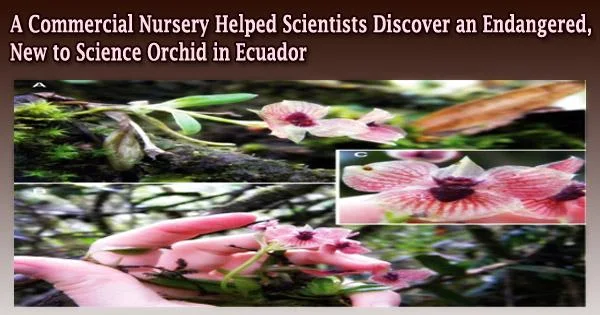In the cloud jungle of Northern Ecuador, a stunning new species of orchid was found. Maxillaria anacatalina-portillae, the plant’s scientific name, was described by Polish orchidologists in partnership with an Ecuadorian business engaged in orchid supply, research, and culture.
The orchid, which is only known from a small area in the province of Carchi, is thought to be a severely endangered species since its small populations are already suffering the negative consequences of anthropogenic climate change.
A nearby commercial nursery that was already growing these orchids helped with the finding. Published in the open-access journal PhytoKeys is the study.
The Neotropical genus Maxillaria, one of the largest in the orchid family, has undergone intense classification and species delimitation work over the past few years by researchers from the University of Gda?sk in Poland.
In their quest to find the amazing plants, they have done numerous field visits in South America and studied samples that have been placed in the majority of the world’s herbarium collections spanning Europe and the Americas.
On November 11, 2003, in Maldonado, Carchi Province, Alex Portilla, a photographer and sales manager for Ecuagenera, an Ecuadorian company dedicated to orchid research, cultivation, and supply, collected the first specimens of what would later be known as the newly discovered Maxillaria anacatalina-portillae (northern Ecuador).
He shot the orchid there in its natural setting before bringing it to his company’s greenhouses for cultivation. Later, its offspring was offered at the commercial market under the name of a different species of the same genus: Maxillaria sanderiana ‘xanthina’ (‘xanthina’ in Latin means ‘yellow’ or ‘red-yellow’).
In the meantime, Prof. Dariusz L. Szlachetko and Dr. Monika M. Lipi?ska would encounter the same intriguing plants with uniquely colored flowers on several different occasions.
They collaborated with Dr. Natalia Olędrzyńska and Aidar A. Sumbembayev to conduct additional morphological and phylogenetic analyses using samples from commercial and hobby growers as well as crucial plants purchased from Ecuagenera that were later cultivated in the greenhouses of the University of Gdask because they suspected they may be dealing with an undescribed taxon.
The orchid was named after the man who discovered it in the first place Ana Catalina Portilla Schröder after their research revealed that it was a previously undiscovered species.
















